How to feed millions of Chinese in half an hour
Hello! Connected Innovation Team X5 Retail Group # x5lab. New technologies in retail - break-through self-service cash desks, queue monitoring, robots at distribution centers, loyalty terminals and much more - this is for us. But today we want to tell not about this, but about our expedition to China, where, following the old Chinese proverb “don’t be afraid that you don’t know, be afraid that you don’t study,” we decided to learn a little and understand how “they have” it .

Not so long ago, China did not seem to us to be the most advanced state in terms of technology - good copies, bad tests; make fast, but with poor quality; Chinese means cheap and short-lived.
In just a few years, the picture has changed: cheap - it means they can be introduced en masse, good copies - it means that everyone in the country does it without duties, avoids import restrictions; high productivity - quickly take errors into account and improve the product.
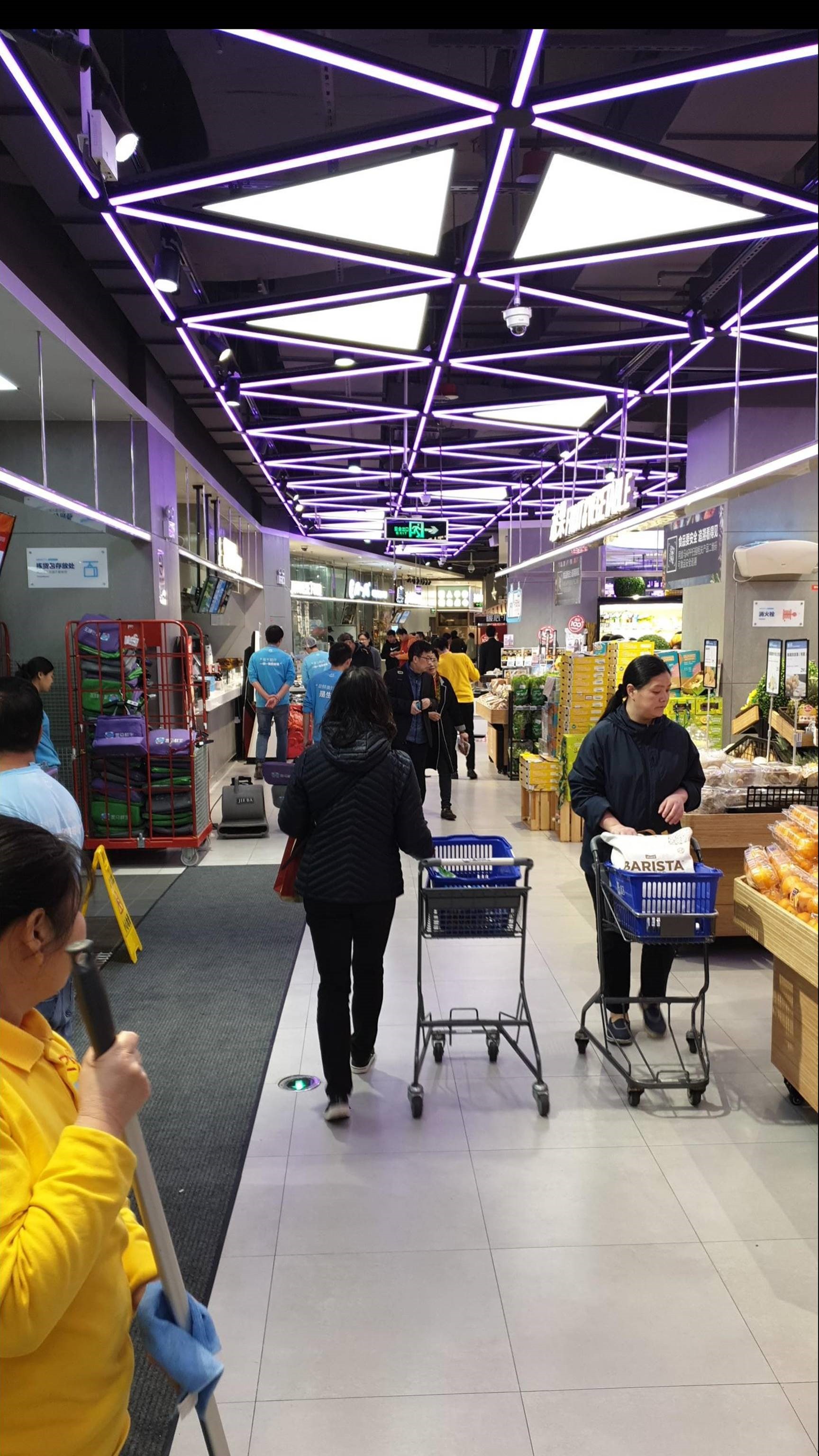
We see very well that making old and well-known technology cheap and mass is not easy. Namely, mass implementation in our business allows us to obtain a significant economic effect. To make an expensive toy with a micro effect in several stores and be proud of it is not enough. The toy must be made useful to customers, cheap and massive, in order to multiply the micro-effect on a macro scale and get a sure economic benefit.

And while retail in the west is working the old fashioned way, China's retail trade is developing by leaps and bounds, overcoming unnecessary stages, introducing the most advanced developments immediately in thousands of stores and supermarkets. According to the State Statistical Office of the PRC, the retail sales of general consumer goods in China for the first eight months of this year amounted to 26.21 trillion yuan (about 3.71 trillion dollars), an increase of 8.2% year on year. From January to August, China saw a marked increase in the volume of sales of goods via the Internet - by 16.8%, to 6.43 trillion yuan ($ 912 billion). (more details can be found on tass.ru).
But 10 years ago, the global global players that came to the Chinese market - Auchan, Carrefour and others - were feeling quite well, actively crowding out local competitors and did not (probably) think about the threat from Internet companies.
Everything changed 3-4 years ago. Alibaba online giants, JD.com, having seized the non-food sending trade segment, switched to a new strategy - capturing the traditional retail and food retail markets, and began to open ordinary (and not quite unusual) supermarkets and outlets.
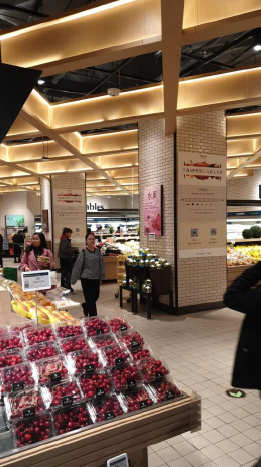
It all started with the pilots of ordinary shops - outlets in densely populated areas. We tried one concept, the second, the third.
Today, Alibaba, which owns one of the most popular Hema chains, implements a comprehensive model for selling goods - offline stores and online with delivery in just 30 minutes.
How it works? First, a classic retail outlet is set up in the area - a store of 600-1000 sq. meters, but with very high quality, freshest products and beautiful commodity layout.

60% of the assortment of such a store is focused on "fresh" - these are fruits and vegetables, fresh fish and meat. The rest of the goods - to fulfill the mission of "additional purchase": water, related products, necessary household chemicals.
When such a "showcase" appears in the quarter, local residents look closely, make 2-3 test purchases - "try on" what quality products are offered here. When such a store appears in the district, at first it only has 10% of online orders.
Stability, freshness, high level of service - after acquiring brand confidence and a certain habit, you can try it online. And now online orders are growing exponentially, simply because it is more convenient.
Many people get into this mode - you get used to the service, make an order on the way home from the same store, which you are already used to after a few visits and which you already trust. And while you wash your hands and play with the children, they are already bringing food. Thus, the substitution of classic offline consumption begins with a new online service, but of a familiar store, a familiar brand and assortment.
We tried (though from the office) - it works, a message from the courier about the delivery came in the 27th minute after the order.

How to meet 30 minutes? Rule number one is the store where the online order is collected, it serves only a certain area, those same visitors who live nearby and are already used to shopping in this particular store. No darkstores, warehouses provided. The order is being collected here and now, as if you yourself were going shopping. Time has passed - the order has been sent and it takes half an hour to appear at your doorstep.
The store is divided into 4 zones - fruits and vegetables, a food court, classic dry products, meat and fish. Each department has a special assembler who is just waiting for the assembly task to come to his terminal. In this case, tasks are divided into zones and each collects its own part. In fact, the staff replaces the ordinary customer - it just does it several times faster, as it is well-versed in the store and in commodity positions. While we were in the store, the guys in blue and green T-shirts with colored bags flickered like shadows behind their backs, without disturbing at the same time shopping “offline” people.

A special design is installed under the ceiling of the store, along which bags with collected orders crawl. It is curious that at the same time the store has low depth and height of shelves - everything is designed for quick turnover and quick replenishment. There are a lot of items and a fresh category in orders - meat, dairy gastronomy, fruits, vegetables. All that is usually eaten immediately, without stocking up for a week. And why is it necessary if you bring fresh meat from a new supply in 30 minutes.
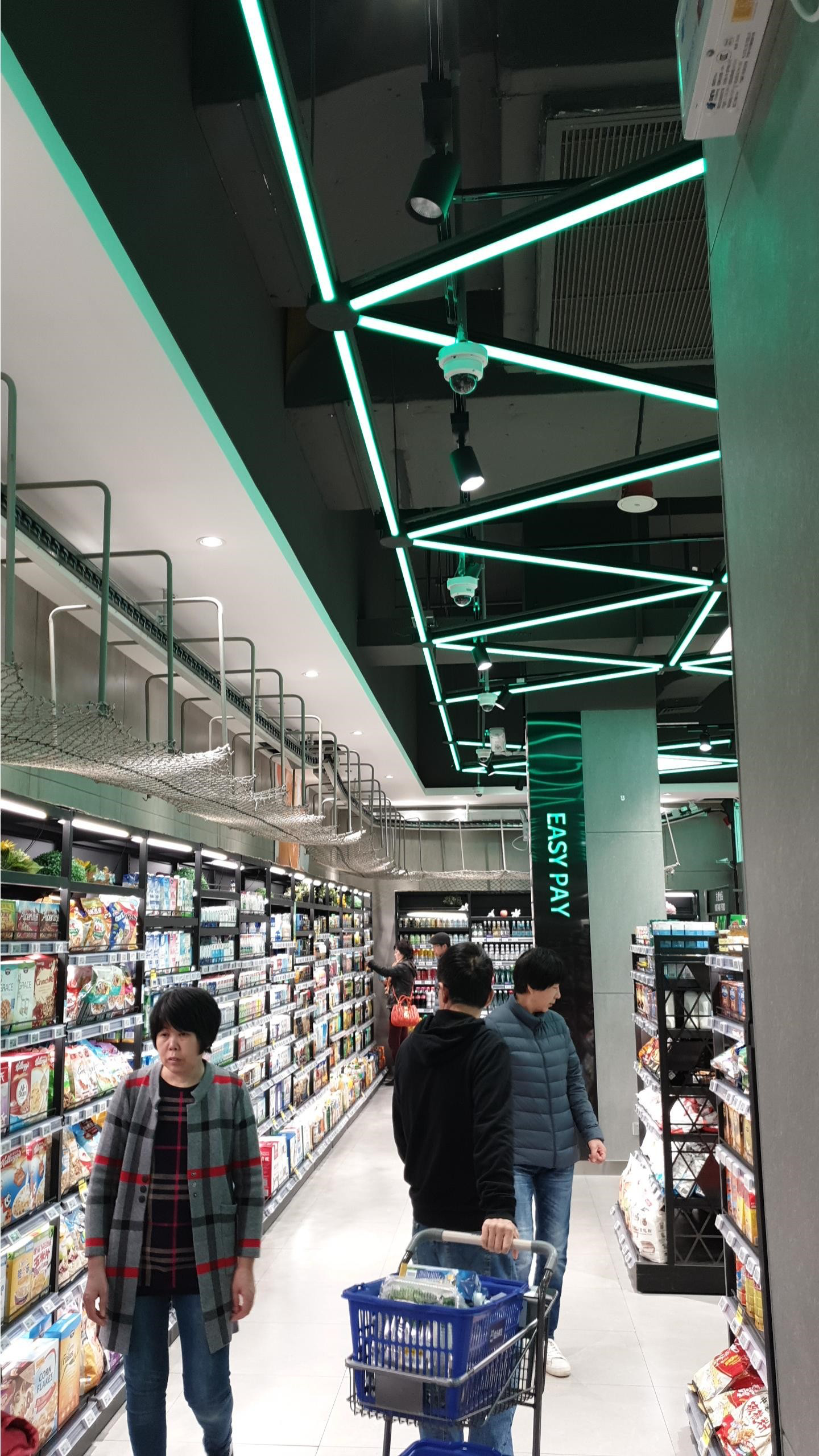
The more accurate the data on the remains on the shelf - the higher the build quality. Those who collect the order and those who replenish the shelf work in a single motivation system. The main task is to make the customer happy and not leave without shopping!

Further, in a special room, bags of goods are sorted by customers and laid out in special foam containers that hold the temperature perfectly for 30 minutes. And you can stand and jump on them. The same uses the online store Perekrestok.ru.
Meanwhile, the staff in the store begins to collect the next order. Each such bag has a bar code - there should be no errors, they go up on a special elevator and leave!
The order is transported by electric scooters, which are a dime a dozen in Shanghai and in Beijing and other cities. They have a dedicated lane (though they ride the same way they want, even on the red or on the footpath). We called them to ourselves - silent death. It is absolutely inaudible, one wrong move and they hit you

Each scooter in China is necessarily two boxes: one in the legs, one on the trunk in the back. There is an indispensable fuss at the store’s front door - dozens of drivers are waiting, pushing, hustling, making their way with the order or trying to leave.
However, familiar stores also do not disappear. They only get better - it's really nice to be here. It's not about design or some breakthrough concept - rather, everything is done for the buyer: the freshest, perfectly shaped products; beautiful, symmetrical layout; light accents in the design. Emphasis on fresh and impeccable service. Supermarket for the middle class.

Technology is there to help. All the price tags in the store are electronic, and everything is made in China - they are much cheaper than world analogues (at least due to the absence of import duties and logistics costs for shipping around the world).

Store employees are not distracted by working with price tags - information is updated automatically, errors with the cost of goods are excluded. Each store is equipped with a self-service checkout area.
There are no scales in this zone - all the goods are already hung up: I took and ran. As a rule, there is only one classic ticket office in it, the rest are “digital cashiers” (up to 25 such cash registers can be installed in a zone).
The vast majority of buyers are accustomed to independently scan goods, and a lone cashier looks at his digital "brothers" with boredom - he is here, rather, just in case (for inexperienced buyers from Russia, for example).
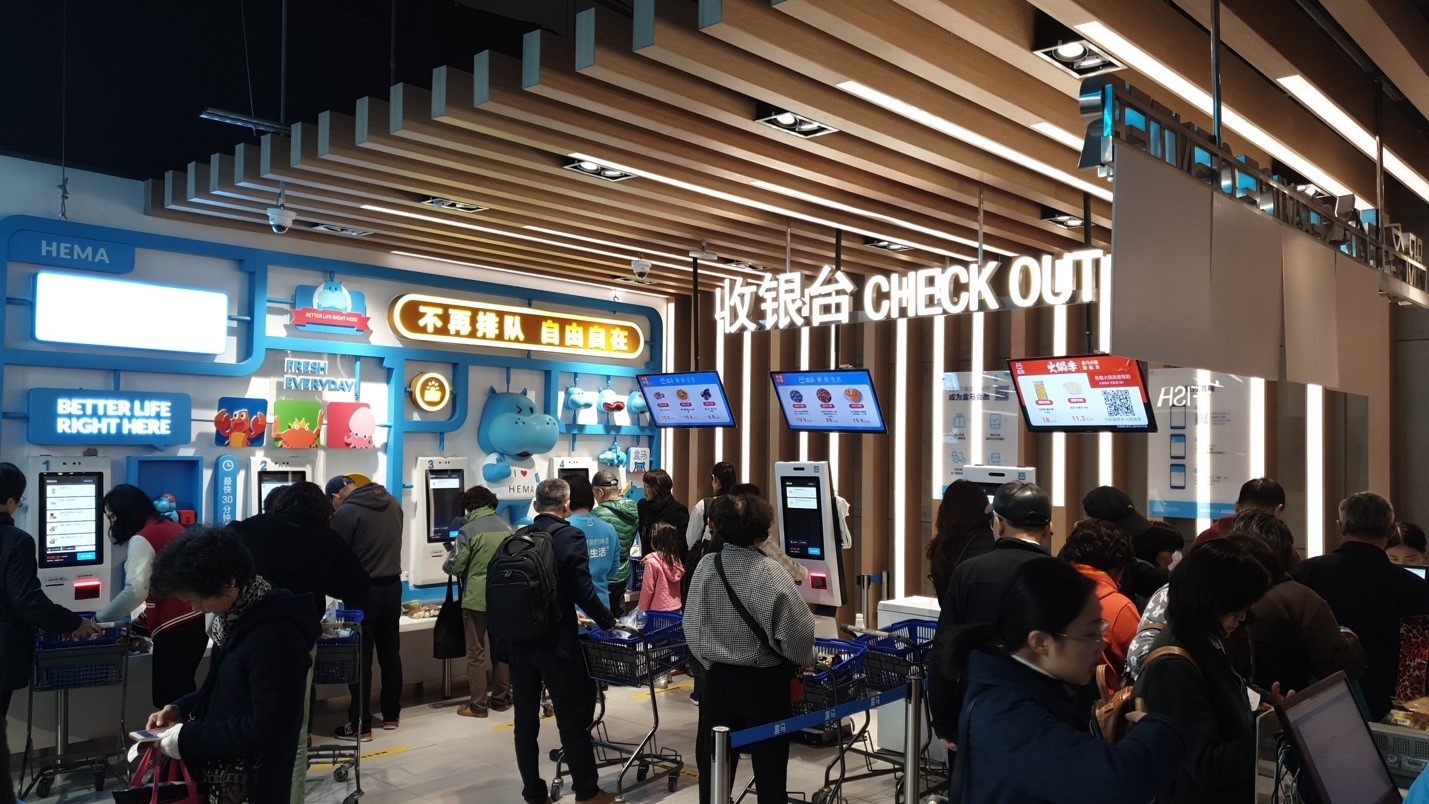
Another technology at the service of the buyer is blockchain. Monitors above the "fresh" zone help to find out detailed information about the country of origin of the goods, when it arrived at them, the expiration date - just touch a pack of the screen. It is very beautiful, however, almost no one uses it.
Everything is so fresh that it can be seen, as they say, with the naked eye - why waste time getting extra information.
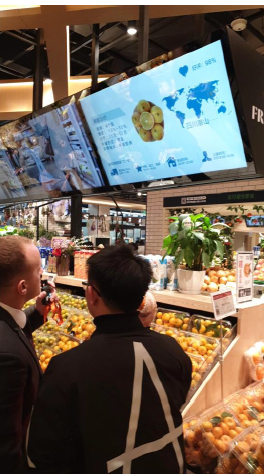
How do they pay in such stores? Banknotes are definitely no longer in fashion. The most popular payment is through WeChat and AliPay. Through the application in the mobile phone self-service cash desks receive all the necessary personal information - one second and payment is made.
There is also a financial reason - a low commission for acquiring (only 0.1-02,% when paying through these two applications). But payment by the person is introduced in some stores, but, nevertheless, it remains an expensive toy. We closely watched the hour behind what was happening in the cash zone, and did not see thousands of Chinese citizens paying for their purchases by their faces. But the fashionable chip works, and if you correctly configure all the permissions in your WeChat account, by entering a PIN code, payment will pass.
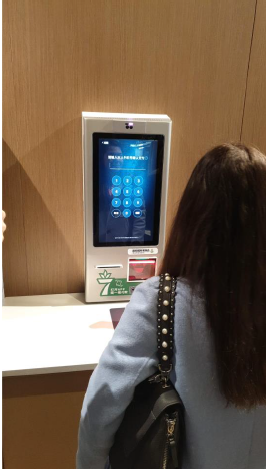
Cash is unlikely to be useful in the future. Even if you want to financially support a local artist on the evening promenade of Shanghai to the sounds of eternal street music, there will be two donation options to choose from: QR codes AliPay and WeChat. You scan and so give your coin.
China is already actively delivering drones. But not in cities where there are a lot of wires and other channels are involved, but in a rural and remote mountainous area (they deliver mainly packages with medicines).
In large cities, fully automated autonomous stores are being introduced and used. Such a newfangled “kiosk” is literally stuffed with cameras. You pay at the self-checkout counter or in the application.
A very interesting concept in Chinese Auchan. Next to the hypermarket of the same network there is a coverage area of several blocks of 5-7 houses. A round-the-clock automated boxing is located in such a zone - they buy it here if you go far to the hypermarket or there is no need, as well as at night, when even courier delivery does not work. In such a store, not only snacks and water, but there is rice, pasta - everything that can be cooked quickly and at the same time not to remain hungry.

As a result, there is no single dominant consumption model in China. Different systems and different purchasing missions coexist here. In stores like Hema, traffic is divided into two approximately equal parts - 3-4 thousand customers come to the store every day and buy the same amount online with delivery in just 30 minutes. Sometimes the same buyer can use both online and offline tools, so a complete transition to one type of consumption does not occur.
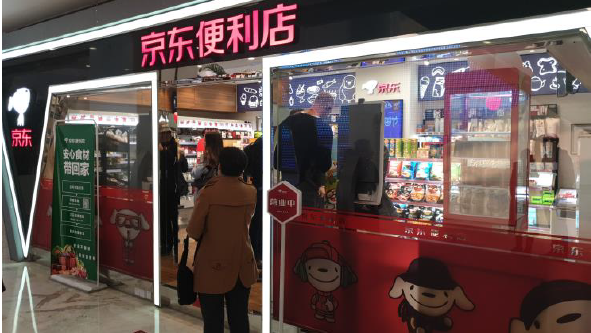
It is curious that such fast delivery is not always a profitable business. The task of such stores is not only (and not so much) to make money.
It seems that the online giants of the Chinese industry could answer the questions about marginality like this: we set up a store in this area and now we know every second resident in these houses (after all, he registered in our online shopping application) - we know his habits and needs (what he eats), financial opportunities (check), even family composition (diapers). This means that we can offer him, with the help of our other services, the goods and services that are demanded by him - and make money on it.
This buyer has downloaded our application, will look for something on our website - we can promote the necessary advertising of our suppliers or offer cross-sales. Thus, we will increase the conversion.
And the business will not be to make money on food here and now, but to build long-term relationships with the buyer - both online and offline, and delivery, and additional services. And the buyer remains in this ecosystem.

For such “monsters” of the Chinese market as JD, leaving for “stone” (that is offline) retail is another way to increase capitalization. And even if at first you earn a little, you are provided with a constant cash flow (cash flow). By increasing turnover, you become even more attractive for investors as well. And in what other industry will you find such high speeds (well, except for oil and gas) ...
Today, online orders have become a prerequisite for the success of classic stores. More recently - exotic, and today half of all the checks of the outlet, the factor of constant traffic and even customer loyalty. The most important thing about this is not to lose speed. Until a 30-minute delivery was introduced, the proportion of online orders did not exceed 10%. Overcoming the treasured half-hour threshold allowed to increase the indicator to 40-50%.
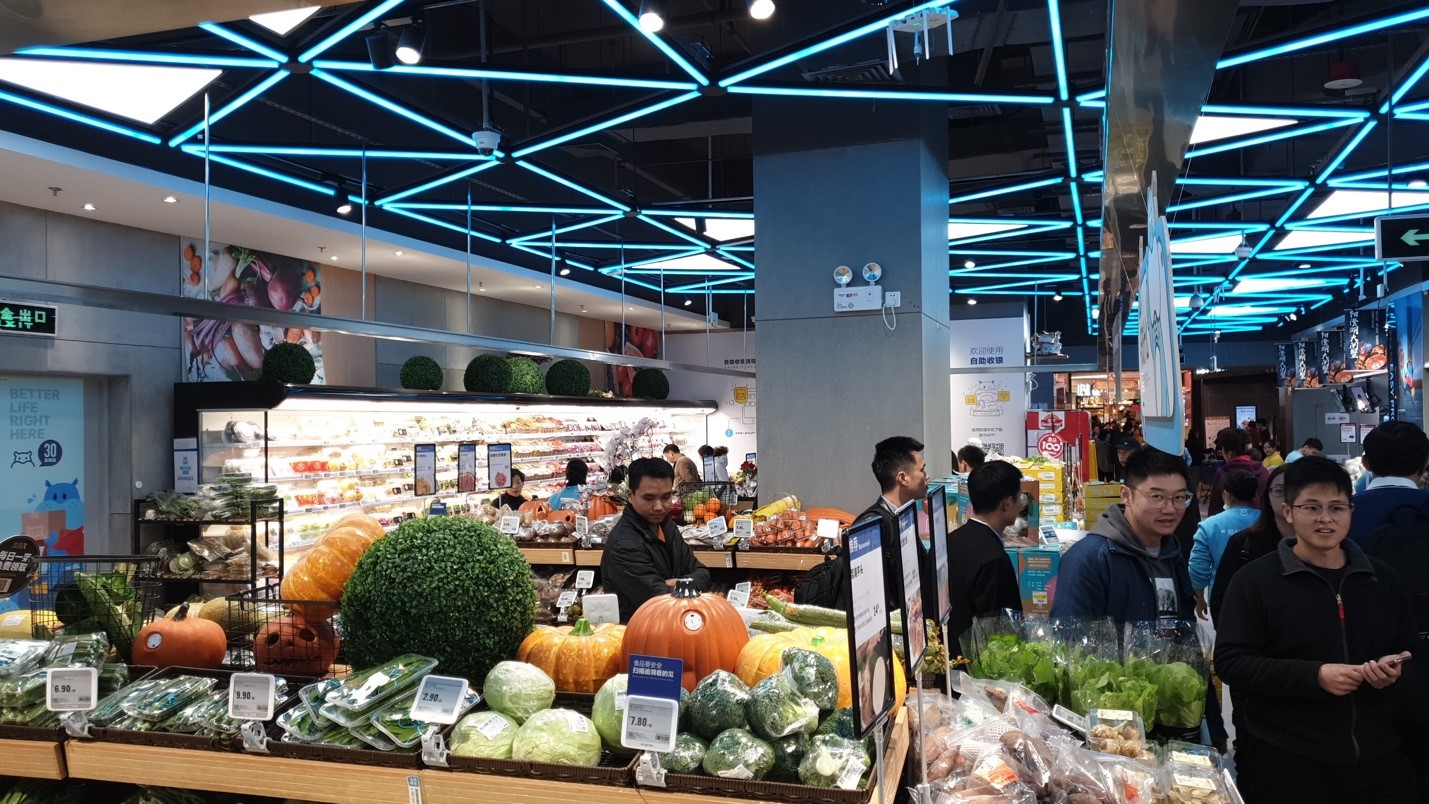
Of course, such technologies (even in China) are the lot of megacities. In small towns, market trade is still developed, discounters and Walmart (a bit like the Chinese market) are still here. Online consumption captures the middle class - those who are used to consuming fresh - here and now. And at reasonable prices.
In a modern Chinese store, it becomes clear that in the future, our consumption, if it changes, will be quite a bit in form, but not in content. Here, really massive, impressive technologies are the background theme.
Classic retail streams become a wow factor: freshness, quality, layout, assortment, convenient and fast service, personal approach, details in store design, fast delivery. What you are going to the store for as a buyer. The whole system works only for the sake of the buyer. Like 500 years ago.
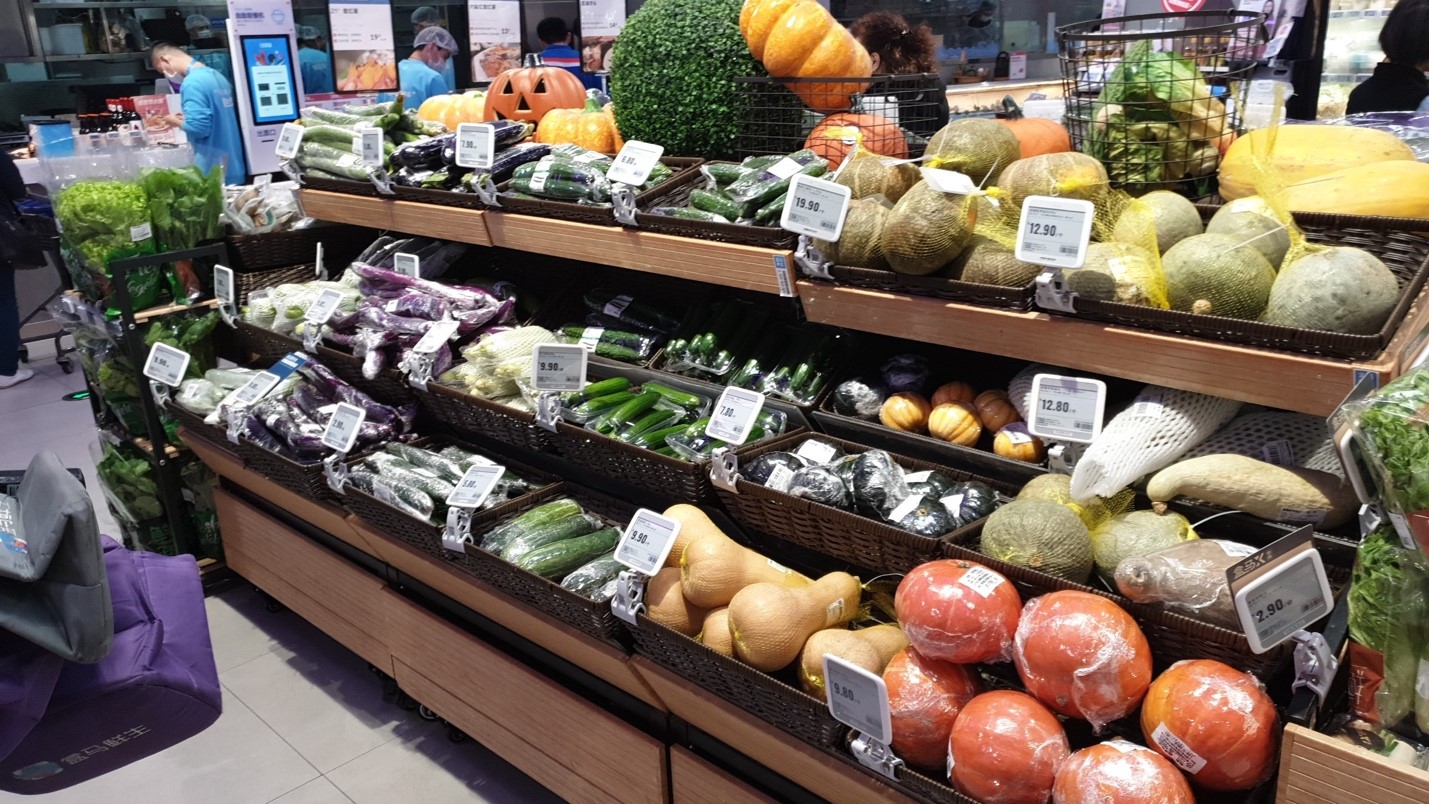

Not so long ago, China did not seem to us to be the most advanced state in terms of technology - good copies, bad tests; make fast, but with poor quality; Chinese means cheap and short-lived.
In just a few years, the picture has changed: cheap - it means they can be introduced en masse, good copies - it means that everyone in the country does it without duties, avoids import restrictions; high productivity - quickly take errors into account and improve the product.

We see very well that making old and well-known technology cheap and mass is not easy. Namely, mass implementation in our business allows us to obtain a significant economic effect. To make an expensive toy with a micro effect in several stores and be proud of it is not enough. The toy must be made useful to customers, cheap and massive, in order to multiply the micro-effect on a macro scale and get a sure economic benefit.

And while retail in the west is working the old fashioned way, China's retail trade is developing by leaps and bounds, overcoming unnecessary stages, introducing the most advanced developments immediately in thousands of stores and supermarkets. According to the State Statistical Office of the PRC, the retail sales of general consumer goods in China for the first eight months of this year amounted to 26.21 trillion yuan (about 3.71 trillion dollars), an increase of 8.2% year on year. From January to August, China saw a marked increase in the volume of sales of goods via the Internet - by 16.8%, to 6.43 trillion yuan ($ 912 billion). (more details can be found on tass.ru).
The store is turning, the store is turning ...
But 10 years ago, the global global players that came to the Chinese market - Auchan, Carrefour and others - were feeling quite well, actively crowding out local competitors and did not (probably) think about the threat from Internet companies.
Everything changed 3-4 years ago. Alibaba online giants, JD.com, having seized the non-food sending trade segment, switched to a new strategy - capturing the traditional retail and food retail markets, and began to open ordinary (and not quite unusual) supermarkets and outlets.

It all started with the pilots of ordinary shops - outlets in densely populated areas. We tried one concept, the second, the third.
Today, Alibaba, which owns one of the most popular Hema chains, implements a comprehensive model for selling goods - offline stores and online with delivery in just 30 minutes.
How it works? First, a classic retail outlet is set up in the area - a store of 600-1000 sq. meters, but with very high quality, freshest products and beautiful commodity layout.

60% of the assortment of such a store is focused on "fresh" - these are fruits and vegetables, fresh fish and meat. The rest of the goods - to fulfill the mission of "additional purchase": water, related products, necessary household chemicals.
When such a "showcase" appears in the quarter, local residents look closely, make 2-3 test purchases - "try on" what quality products are offered here. When such a store appears in the district, at first it only has 10% of online orders.
Stability, freshness, high level of service - after acquiring brand confidence and a certain habit, you can try it online. And now online orders are growing exponentially, simply because it is more convenient.
Many people get into this mode - you get used to the service, make an order on the way home from the same store, which you are already used to after a few visits and which you already trust. And while you wash your hands and play with the children, they are already bringing food. Thus, the substitution of classic offline consumption begins with a new online service, but of a familiar store, a familiar brand and assortment.
We tried (though from the office) - it works, a message from the courier about the delivery came in the 27th minute after the order.

A traditional store is turning ... ..--- into delivery in 30 minutes
How to meet 30 minutes? Rule number one is the store where the online order is collected, it serves only a certain area, those same visitors who live nearby and are already used to shopping in this particular store. No darkstores, warehouses provided. The order is being collected here and now, as if you yourself were going shopping. Time has passed - the order has been sent and it takes half an hour to appear at your doorstep.
The store is divided into 4 zones - fruits and vegetables, a food court, classic dry products, meat and fish. Each department has a special assembler who is just waiting for the assembly task to come to his terminal. In this case, tasks are divided into zones and each collects its own part. In fact, the staff replaces the ordinary customer - it just does it several times faster, as it is well-versed in the store and in commodity positions. While we were in the store, the guys in blue and green T-shirts with colored bags flickered like shadows behind their backs, without disturbing at the same time shopping “offline” people.

A special design is installed under the ceiling of the store, along which bags with collected orders crawl. It is curious that at the same time the store has low depth and height of shelves - everything is designed for quick turnover and quick replenishment. There are a lot of items and a fresh category in orders - meat, dairy gastronomy, fruits, vegetables. All that is usually eaten immediately, without stocking up for a week. And why is it necessary if you bring fresh meat from a new supply in 30 minutes.

The more accurate the data on the remains on the shelf - the higher the build quality. Those who collect the order and those who replenish the shelf work in a single motivation system. The main task is to make the customer happy and not leave without shopping!

Further, in a special room, bags of goods are sorted by customers and laid out in special foam containers that hold the temperature perfectly for 30 minutes. And you can stand and jump on them. The same uses the online store Perekrestok.ru.
Meanwhile, the staff in the store begins to collect the next order. Each such bag has a bar code - there should be no errors, they go up on a special elevator and leave!
The order is transported by electric scooters, which are a dime a dozen in Shanghai and in Beijing and other cities. They have a dedicated lane (though they ride the same way they want, even on the red or on the footpath). We called them to ourselves - silent death. It is absolutely inaudible, one wrong move and they hit you

Each scooter in China is necessarily two boxes: one in the legs, one on the trunk in the back. There is an indispensable fuss at the store’s front door - dozens of drivers are waiting, pushing, hustling, making their way with the order or trying to leave.
Take, scan and go
However, familiar stores also do not disappear. They only get better - it's really nice to be here. It's not about design or some breakthrough concept - rather, everything is done for the buyer: the freshest, perfectly shaped products; beautiful, symmetrical layout; light accents in the design. Emphasis on fresh and impeccable service. Supermarket for the middle class.

Technology is there to help. All the price tags in the store are electronic, and everything is made in China - they are much cheaper than world analogues (at least due to the absence of import duties and logistics costs for shipping around the world).

Store employees are not distracted by working with price tags - information is updated automatically, errors with the cost of goods are excluded. Each store is equipped with a self-service checkout area.
There are no scales in this zone - all the goods are already hung up: I took and ran. As a rule, there is only one classic ticket office in it, the rest are “digital cashiers” (up to 25 such cash registers can be installed in a zone).
The vast majority of buyers are accustomed to independently scan goods, and a lone cashier looks at his digital "brothers" with boredom - he is here, rather, just in case (for inexperienced buyers from Russia, for example).

Another technology at the service of the buyer is blockchain. Monitors above the "fresh" zone help to find out detailed information about the country of origin of the goods, when it arrived at them, the expiration date - just touch a pack of the screen. It is very beautiful, however, almost no one uses it.
Everything is so fresh that it can be seen, as they say, with the naked eye - why waste time getting extra information.

How do they pay in such stores? Banknotes are definitely no longer in fashion. The most popular payment is through WeChat and AliPay. Through the application in the mobile phone self-service cash desks receive all the necessary personal information - one second and payment is made.
There is also a financial reason - a low commission for acquiring (only 0.1-02,% when paying through these two applications). But payment by the person is introduced in some stores, but, nevertheless, it remains an expensive toy. We closely watched the hour behind what was happening in the cash zone, and did not see thousands of Chinese citizens paying for their purchases by their faces. But the fashionable chip works, and if you correctly configure all the permissions in your WeChat account, by entering a PIN code, payment will pass.

Cash is unlikely to be useful in the future. Even if you want to financially support a local artist on the evening promenade of Shanghai to the sounds of eternal street music, there will be two donation options to choose from: QR codes AliPay and WeChat. You scan and so give your coin.
China is already actively delivering drones. But not in cities where there are a lot of wires and other channels are involved, but in a rural and remote mountainous area (they deliver mainly packages with medicines).
In large cities, fully automated autonomous stores are being introduced and used. Such a newfangled “kiosk” is literally stuffed with cameras. You pay at the self-checkout counter or in the application.
A very interesting concept in Chinese Auchan. Next to the hypermarket of the same network there is a coverage area of several blocks of 5-7 houses. A round-the-clock automated boxing is located in such a zone - they buy it here if you go far to the hypermarket or there is no need, as well as at night, when even courier delivery does not work. In such a store, not only snacks and water, but there is rice, pasta - everything that can be cooked quickly and at the same time not to remain hungry.

The buyer decides everything
As a result, there is no single dominant consumption model in China. Different systems and different purchasing missions coexist here. In stores like Hema, traffic is divided into two approximately equal parts - 3-4 thousand customers come to the store every day and buy the same amount online with delivery in just 30 minutes. Sometimes the same buyer can use both online and offline tools, so a complete transition to one type of consumption does not occur.

It is curious that such fast delivery is not always a profitable business. The task of such stores is not only (and not so much) to make money.
It seems that the online giants of the Chinese industry could answer the questions about marginality like this: we set up a store in this area and now we know every second resident in these houses (after all, he registered in our online shopping application) - we know his habits and needs (what he eats), financial opportunities (check), even family composition (diapers). This means that we can offer him, with the help of our other services, the goods and services that are demanded by him - and make money on it.
This buyer has downloaded our application, will look for something on our website - we can promote the necessary advertising of our suppliers or offer cross-sales. Thus, we will increase the conversion.
And the business will not be to make money on food here and now, but to build long-term relationships with the buyer - both online and offline, and delivery, and additional services. And the buyer remains in this ecosystem.

For such “monsters” of the Chinese market as JD, leaving for “stone” (that is offline) retail is another way to increase capitalization. And even if at first you earn a little, you are provided with a constant cash flow (cash flow). By increasing turnover, you become even more attractive for investors as well. And in what other industry will you find such high speeds (well, except for oil and gas) ...
Today, online orders have become a prerequisite for the success of classic stores. More recently - exotic, and today half of all the checks of the outlet, the factor of constant traffic and even customer loyalty. The most important thing about this is not to lose speed. Until a 30-minute delivery was introduced, the proportion of online orders did not exceed 10%. Overcoming the treasured half-hour threshold allowed to increase the indicator to 40-50%.

Of course, such technologies (even in China) are the lot of megacities. In small towns, market trade is still developed, discounters and Walmart (a bit like the Chinese market) are still here. Online consumption captures the middle class - those who are used to consuming fresh - here and now. And at reasonable prices.
In a modern Chinese store, it becomes clear that in the future, our consumption, if it changes, will be quite a bit in form, but not in content. Here, really massive, impressive technologies are the background theme.
Classic retail streams become a wow factor: freshness, quality, layout, assortment, convenient and fast service, personal approach, details in store design, fast delivery. What you are going to the store for as a buyer. The whole system works only for the sake of the buyer. Like 500 years ago.

All Articles